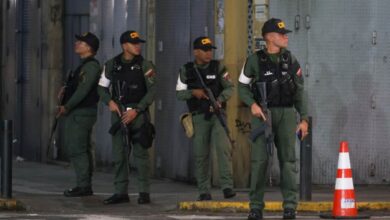Ukraine War: This is How the Most Recent Conflicts Have Ended
When a war ends, there is still much to be resolved. These 3 conflicts already finished shed light on the results that the Ukraine War could have.

Photo: Pixabay
LatinAmerican Post | July Vanesa López Romero
Escucha este artículo
Leer en español: Guerra en Ucrania: Así han terminado los conflictos más recientes
The Ukraine War appears to be far from over and has apparently been in a state of stalemate since February as Russia has been unable to break through Donbass and Ukraine has failed to recapture invaded territories. The truth is that eventually the war will stop, one way or another, and when it does, there will still be a lot to figure out. Next we review 3 wars that have already ended and the results and consequences that they have left behind.
Afghanistan War
The war in Afghanistan began on October 7, 2001, when the United States, with the help of its NATO allies, invaded the Asian country. The war was declared after the attacks of September 11 of the same year and was intended to dismantle the terrorist group Al-Qaeda.
Read also: Kara-Murza: the Last Great Opponent of Vladimir Putin Sentenced to 25 Years in Prison
The United States managed to remove the Taliban regime that controlled much of the country since 1996 and allowed elections to be held to form a democratic government. However, the Afghan country did not have political stability and the Taliban continued to control a large part of the country, so they sought to return to power. Consequently, the war dragged on and seemed to go nowhere. In 2014 NATO decided not to continue fighting. In 2021, the United States, after 20 years of war, definitively withdrew from the country and the Taliban returned to power.
In figures, the war left these results:
-
Human cost: more than 46,000 civilians were killed and more than 51,000 Afghan insurgents, 2,242 US soldiers and 1,144 soldiers from other NATO countries died during attacks by both sides.
-
Economic cost: According to the Watson Institute, the United States spent US$2.3 trillion, while the United Kingdom and Germany spent US$30 billion and US$19 billion respectively.
It should also be mentioned that the displaced number is inaccurate, but by the end of 2020, 2.2 million displaced Afghans were living in Iraq and Pakistan. To this, we must add that the war left a significant increase in the production of opiates in the Asian country, since this was one of the main sources of financing for the insurgent armed groups. The withdrawal of the United States left a great power vacuum and left behind 20 years of exhausting war in a country that was left torn apart and in the very hands of those who controlled it when it began.
Iraq War
The Iraq war began in 2003 when a coalition of countries led by the United States invaded the country. The main reason was that, supposedly, the government of the dictator Saddam Hussein possessed weapons of mass destruction, which meant a threat to international security. Some time later, it was confirmed that this was not true. Despite the fact that the invasion led to the overthrow of Hussein almost immediately, the political crisis that was already going through the country, the presence of Al-Qaeda and the conflict between Sunnis and Shiites led to the war spreading and fluctuating greatly during the 8 years how hard.
The figures of the war are the following:
-
Human cost: the data estimates that 400,000 civilians died as a result of the war, of which 200,000 died in combat. Likewise, an estimated 4,487 US soldiers and 318 from other coalition countries were killed.
-
Economic cost: a total cost is estimated to be around US$3 trillion.
-
The number of displaced persons was 1.6 million people.
This year marks the 20th anniversary of the invasion of Iraq, and the consequences are more than visible. Today we find ourselves with a country with an unstable State and a political environment without direction due to the entrenchment of fundamentalist groups due to the US invasion. This results, in turn, in the inefficiency of basic services such as health, education, public services, etc.
Iraq is, today, the ghost of a supposed “freedom” that the Americans would deliver, but that in reality it was an invasion that today is recognized as illegal, according to the UN.
Yugoslav Wars
The Yugoslav Wars were made up of a series of armed conflicts in the Balkan region. These conflicts, which occurred between 1991 and 2001, were characterized by having an ethnic and religious nature. They started after Croatia and Slovenia declared their independence from Yugoslavia. This created the feeling of independence from the other countries that made up the group of countries, especially due to the difference in religions and thoughts. The largest and most affected confrontation was between Croatia, Bosnia, and Serbia.
The figures of these wars show the following:
-
Human cost: according to data from Nasa Borba and the independent weekly Vreme , 223,650 people lost their lives. It is estimated that 65% of this number were Bosnian Muslims.
-
Economic cost: It is estimated that the war cost approximately 20 billion dollars.
-
The number of displaced people was around 3.7 to 4 million people.
The war had strong economic and political effects for the countries involved. Although, today, there is an apparent peace between borders, the wounds are still open, which is notorious especially in the gaze towards the Serbs, who are seen as natural enemies of Bosnia. Today, Bosnia has a high unemployment rate, a high level of corruption and a politics characterized by clientelism. It is a decentralized state that does not have a fixed course.
This allows us to see broadly the main consequences that remain after a war between countries. Political, economic and cultural crises strongly affect the essence and stability of the countries involved. The Russo-Ukrainian war may be destined to have these same kinds of problems once it is over, depending on how well-balanced the states involved are.





